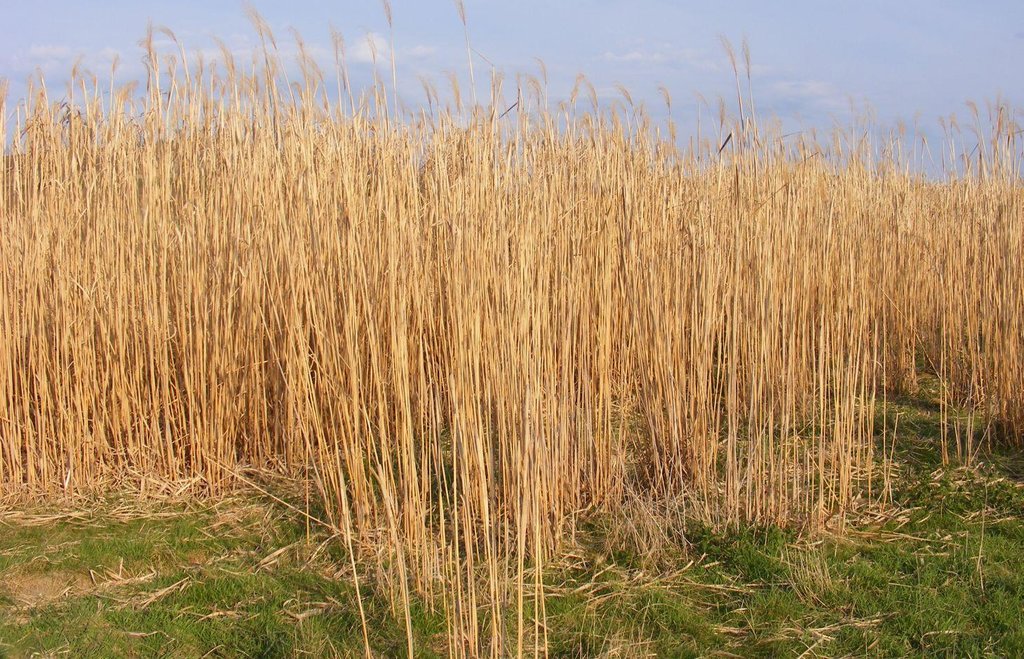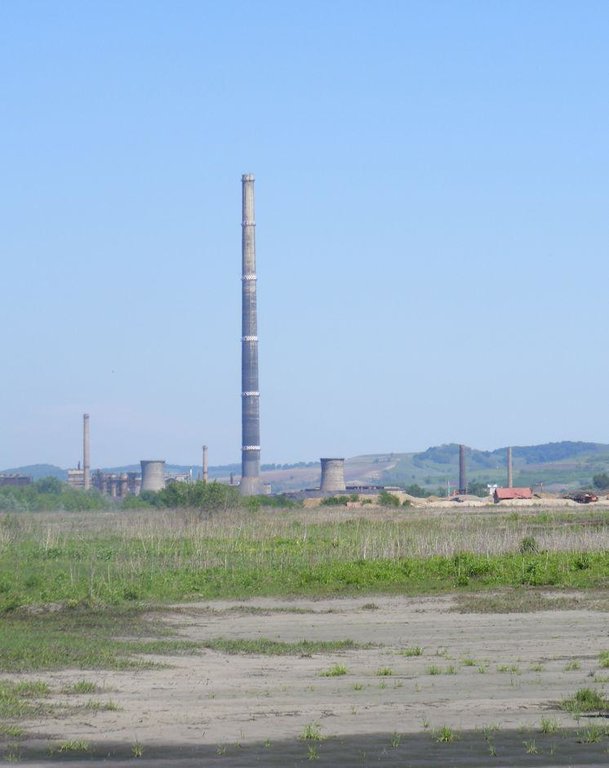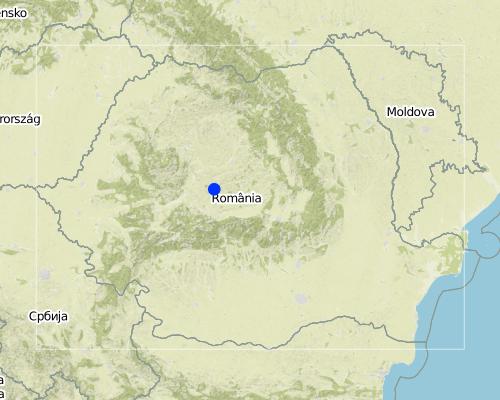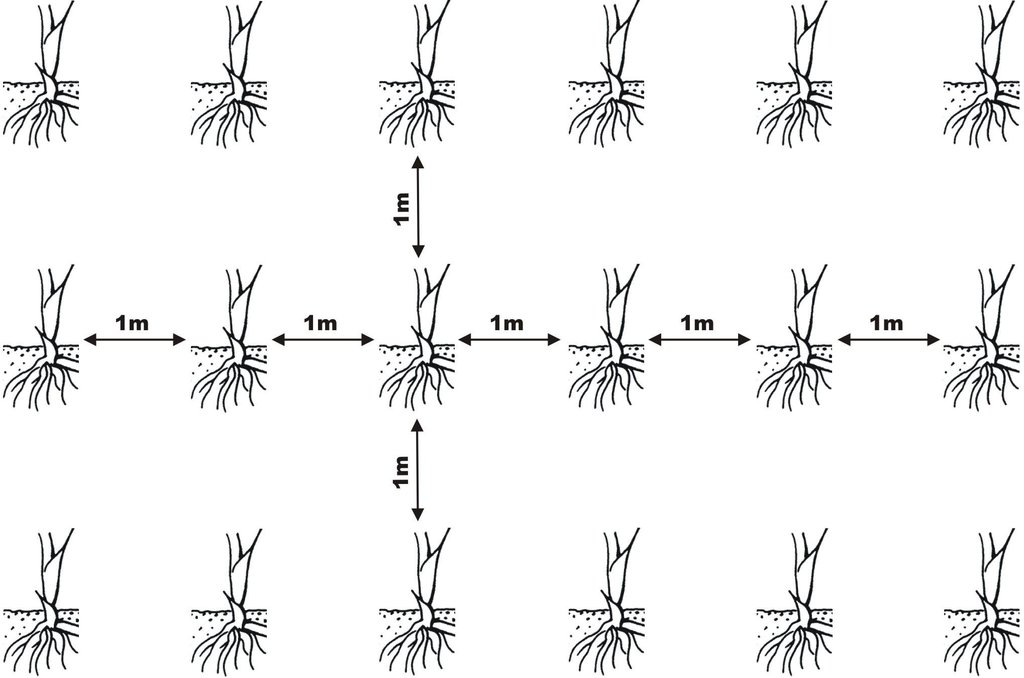Cropping perennial grasses (Miscanthus sinensis gigantheus) on soils contaminated with heavy metals [罗马尼亚]
- 创建:
- 更新:
- 编制者: Andrei Vrinceanu
- 编辑者: –
- 审查者: Deborah Niggli
Cultivarea cu Miscanthus a solurilor poluate cu metale grele (Romanian)
technologies_1706 - 罗马尼亚
查看章节
全部展开 全部收起1. 一般信息
1.2 参与该技术评估和文件编制的资源人员和机构的联系方式
SLM专业人员:
SLM专业人员:
Horia Barbu
Lucian Blaga University of Sibiu
罗马尼亚
有助于对技术进行记录/评估的机构名称(如相关)
National Research and Development Institute for So (National Research and Development Institute for So) - 罗马尼亚1.3 关于使用通过WOCAT记录的数据的条件
(现场)数据是什么时候汇编的?:
18/05/2015
编制者和关键资源人员接受有关使用通过WOCAT记录数据的条件。:
是
1.4 所述技术的可持续性声明
这里所描述的技术在土地退化方面是否存在问题,导致无法被认为是一种可持续的土地管理技术?:
否
2. SLM技术的说明
2.1 技术简介
技术定义:
Miscanthus sinensis gigantheus is a perennial warm-season grass used as a commercial energy crop on soils contaminated with heavy metals.
2.2 技术的详细说明
说明:
Cropping Miscanthus sinensis gigantheus mainly addresses the problem of land contamination with toxic materials namely soil pollution with heavy metals due to industrial activities. Miscanthus is a perennial warm-season grass used as a commercial energy crop. The plant is a sterile hybrid, unable to produce viable seed, vegetative propagation being by rhizomes, therefore reducing the risk to become invasive. Its special type of photosynthesis (C4) implies the return of the nutrients in the rhizomes during the cold season. As temperatures cool in the fall, the dark green foliage fades to buff and drops, leaving the stems which are the most important commercial part of Miscanthus. Regarding cropping on contaminated soils, research has shown that the amount of heavy metals uptaken by Miscanthus is extremely low, making the plant unsuitable for phytoextraction but allowing it to be used for green energy or in various other fields like pulp and paper industry, without any risk. Miscanthus sinensis gigantheus stands for an alternative crop, from which an annual income can be obtained, instead of food crops and fodder that can represent a risk for human and animal consumption in areas with soils contaminated with heavy metals.
The aim of this technology is to assure a sustainable use of polluted soils with heavy metals through cultivation of energy crops with economic value and very few risks for humans, animals and environment. Studies of Miscanthus sinensis gigantheus behaviour on contaminated soils with heavy metals showed that very small amount of Pb (Lead) and Cd (Cadmium) were detected in the upper parts of the plants. In comparison, higher amounts of heavy metals is being retained at root level in rhizomes, which in time will decrease when root system will develop deeper, in less affected soil horizons as roots can reach 2-3 m in depth. The applied technology increases overall soil quality in terms of organic matter, nutrients and structure. Miscanthus cropping enhances the nutrients cycle in the plant–soil system. As a result of the high input of leaves, rhizomes and roots, the alluvial sandy loam soils, on which Miscanthus is currently croped, can benefit of increased organic carbon amount.
The establishment phase takes place on arable land (annual cropland) which after implementation will become a permanent cropland with perennial (non-woody) cropping, as the crop has the potential to be in the ground for at least 15 years. Miscanthus cropping technique consists of the following: weeding the site in July-August by spraying herbicides for controlling perennial weeds, deep ploughing in October-November to improve subsoil structure and soil aeration possible affected by compaction or hardpan, harrowing in February-April to ensure an adequate seedbed for rhizomes and planting in March-May. Early planting is being recommended as it takes advantage of spring time soil moisture and allows an extended first season of growth. The operation can be made using a modular potato planter or specialized planter like Miscanthus ETPM4. The planting rate is 10 000 rhizomes per hectare in order to provide a good crop density required to achieve optimal yields from year three onwards and effective weed suppression through competition. Rhizomes need to be planted at a depth of 8-15 cm and at 1m x 1m wide spacing. The crop is harvested annually during February-March, typically with conventional farm machineries or specialized ones like Miscanthus CRM Harvesting Cropper. The crop needs 3 to 4 years to reach a mature yield between 15-18 t/ha. The technology requires mechanized agricultural operations and investments in specialized equipment, if necessary.
The technology is applied mainly on alluvial sandy loam soils (Fluvisols), with deep depths, on low lands with flat-gentle slops (0-5%), placed in valley floors/floodplains. The climate is temperate, semi-arid, with an average annual rainfall between 550-600 mm. The plots cropped with Miscanthus are privately owned but leased. Size of crop land where the technology is applied is usually small up to 2 ha. The farmers receive agricultural subsidies and the production system is mechanized and market oriented.
2.3 技术照片
2.5 已应用该技术的、本评估所涵盖的国家/地区/地点
国家:
罗马尼亚
区域/州/省:
Romania/Transylvania
有关地点的进一步说明:
Sibiu/Axente Sever
Map
×2.6 实施日期
如果不知道确切的年份,请说明大概的日期:
- 不到10年前(最近)
2.7 技术介绍
详细说明该技术是如何引入的:
- 通过项目/外部干预
注释(项目类型等):
from 2008
3. SLM技术的分类
3.2 应用该技术的当前土地利用类型

农田
- 多年一作(非木材)
注释:
Major land use problems (compiler’s opinion): Soil contamination with heavy metals (Pb, Cd, Zn).
Major land use problems (land users’ perception): Soil contamination with heavy metals (Pb, Cd, Zn).
如果由于技术的实施而导致土地用途发生变化,则在技术实施前说明土地利的用途。:
Cropland: Ca: Annual cropping
3.3 有关土地利用的更多信息
该技术所应用土地的供水:
- 雨养
每年的生长季节数:
- 1
具体说明:
Longest growing period in days: 240Longest growing period from month to month: April until October
3.4 该技术所属的SLM组
- 改良的地面/植被覆盖
- 土壤肥力综合管理
3.5 技术传播
具体说明该技术的分布:
- 均匀地分布在一个区域
如果该技术均匀地分布在一个区域上,请注明覆盖的大致区域。:
- 0.1-1 平方千米
注释:
Total area covered by the SLM Technology is 0.14 m2.
3.6 包含该技术的可持续土地管理措施

植物措施
- V2:草和多年生草本植物

管理措施
- M2:改变管理/强度级别
- M4:活动时间安排的重大变化
注释:
Main measures: vegetative measures
Secondary measures: management measures
Type of vegetative measures: aligned: -linear
3.7 该技术强调的主要土地退化类型

土壤水蚀
- Wt:表土流失/地表侵蚀

土壤风蚀
- Ed:风蚀风积

化学性土壤退化
- Cp:土壤污染
注释:
Main causes of degradation: release of airborne pollutants (urban/industry…) (Heavy metals contamination (Pb, Cd, Zn))
Secondary causes of degradation: governance / institutional (Non-ferrous industry was a strategic activity in communist period with high mass production on the expense of environmental investments (e.g. filters).)
3.8 防止、减少或恢复土地退化
具体数量名该技术与土地退化有关的目标:
- 减少土地退化
4. 技术规范、实施活动、投入和成本
4.1 该技术的技术图纸
4.2 技术规范/技术图纸说明
Schematic diagram indicating the spatial distribution of Mischantus rhizomes (1 m between plants) - part of the planting technology
Technical knowledge required for land users: moderate
Main technical functions: increase of biomass (quantity), retain heavy metals at roots level
Secondary technical functions: improvement of ground cover, improvement of surface structure (crusting, sealing), improvement of topsoil structure (compaction), improvement of subsoil structure (hardpan), increase in organic matter, reduction in wind speed
Aligned: -linear
Vegetative material: C : perennial crops
Number of plants per (ha): 10000
Vertical interval between rows / strips / blocks (m): 1
Spacing between rows / strips / blocks (m): 1
Vertical interval within rows / strips / blocks (m): 1
Width within rows / strips / blocks (m): 1
Perennial crops species: Miscanthus sinensis gigantheus
Change of land use practices / intensity level: from rotational cropping to mono-cropping
Major change in timing of activities: from land preparation and planting in the first year to only harvesting from year 3 to 15
4.3 有关投入和成本计算的一般信息
其它/国家货币(具体说明):
Lei
注明美元与当地货币的汇率(如相关):1美元=:
4.0
注明雇用劳工的每日平均工资成本:
12.00
4.4 技术建立活动
| 活动 | 措施类型 | 时间 | |
|---|---|---|---|
| 1. | Treatment with herbicides | 植物性的 | month VII -VIII |
| 2. | Deep ploughing | 植物性的 | month X-XI |
| 3. | Soil preparation by harrowing | 植物性的 | month II-IV |
| 4. | Planting | 植物性的 | month III-V |
4.5 技术建立所需要的费用和投入
| 对投入进行具体说明 | 单位 | 数量 | 单位成本 | 每项投入的总成本 | 土地使用者承担的成本% | |
|---|---|---|---|---|---|---|
| 劳动力 | ha | 1.0 | 102.0 | 102.0 | 93.0 | |
| 设备 | machine use | ha | 1.0 | 237.0 | 237.0 | 93.0 |
| 植物材料 | seeds | ha | 1.0 | 2180.0 | 2180.0 | 93.0 |
| 植物材料 | biocides | ha | 1.0 | 62.0 | 62.0 | 93.0 |
| 技术建立所需总成本 | 2581.0 | |||||
注释:
Duration of establishment phase: 9 month(s)
4.6 维护/经常性活动
| 活动 | 措施类型 | 时间/频率 | |
|---|---|---|---|
| 1. | Harvest | 植物性的 | month II-III |
| 2. | Harvest | 管理 | month II-III |
4.7 维护/经常性活动所需要的费用和投入(每年)
| 对投入进行具体说明 | 单位 | 数量 | 单位成本 | 每项投入的总成本 | 土地使用者承担的成本% | |
|---|---|---|---|---|---|---|
| 劳动力 | ha | 1.0 | 25.0 | 25.0 | ||
| 设备 | machine use | ha | 1.0 | 124.0 | 124.0 | |
| 技术维护所需总成本 | 149.0 | |||||
注释:
Machinery/ tools: MISCANTHUS ETPM4 Planter; MISCANTHUS CRM HARVESTING Cropper; Deep Reversible Plough; Disc Harrows; Sprayers machime; Tractor, MISCANTHUS ETPM4 Planter; MISCANTHUS CRM HARVESTING Cropper; Deep Reversible Plough; Disc Harrows; Sprayers machime; Tractor
The costs are indicated per ha of land where the technology is implemented. The establishment costs are high but after this in the next 15 years the crop requires only harvesting. As part of the National Rural Development Programme, energy crops receive a subsidy of 173 US $ per ha. Prices are for spring 2015.
4.8 影响成本的最重要因素
描述影响成本的最决定性因素:
The price of rhizomes (seeds) per hectare and harvesting activity involving special machines that cut and chop stems are the most determinate factors affecting the costs.
5. 自然和人文环境
5.1 气候
年降雨量
- < 250毫米
- 251-500毫米
- 501-750毫米
- 751-1,000毫米
- 1,001-1,500毫米
- 1,501-2,000毫米
- 2,001-3,000毫米
- 3,001-4,000毫米
- > 4,000毫米
有关降雨的规范/注释:
573 mm/year; May and June register the highest amount of rainfall during the year: 85-100 mm
农业气候带
- 半干旱
Thermal climate class: temperate
5.2 地形
平均坡度:
- 水平(0-2%)
- 缓降(3-5%)
- 平缓(6-10%)
- 滚坡(11-15%)
- 崎岖(16-30%)
- 陡峭(31-60%)
- 非常陡峭(>60%)
地形:
- 高原/平原
- 山脊
- 山坡
- 山地斜坡
- 麓坡
- 谷底
垂直分布带:
- 0-100 m a.s.l.
- 101-500 m a.s.l.
- 501-1,000 m a.s.l.
- 1,001-1,500 m a.s.l.
- 1,501-2,000 m a.s.l.
- 2,001-2,500 m a.s.l.
- 2,501-3,000 m a.s.l.
- 3,001-4,000 m a.s.l.
- > 4,000 m a.s.l.
5.3 土壤
平均土层深度:
- 非常浅(0-20厘米)
- 浅(21-50厘米)
- 中等深度(51-80厘米)
- 深(81-120厘米)
- 非常深(> 120厘米)
土壤质地(表土):
- 粗粒/轻(砂质)
- 中粒(壤土、粉土)
表土有机质:
- 中(1-3%)
5.4 水资源可用性和质量
地下水位表:
< 5米
地表水的可用性:
好
水质(未处理):
不良饮用水(需要处理)
5.5 生物多样性
物种多样性:
- 中等
5.6 应用该技术的土地使用者的特征
生产系统的市场定位:
- 商业/市场
非农收入:
- 收入的10-50%
相对财富水平:
- 平均水平
个人或集体:
- 个人/家庭
机械化水平:
- 手工作业
- 机械化/电动
性别:
- 男人
说明土地使用者的其他有关特征:
Land users applying the Technology are mainly common / average land users
Population density: 10-50 persons/km2
Annual population growth: 0.5% - 1%
100% of the land users are average wealthy and own 75% of the land.
and own 25% of the land.
5.7 应用该技术的土地使用者拥有或租用的平均土地面积
- < 0.5 公顷
- 0.5-1 公顷
- 1-2 公顷
- 2-5公顷
- 5-15公顷
- 15-50公顷
- 50-100公顷
- 100-500公顷
- 500-1,000公顷
- 1,000-10,000公顷
- > 10,000公顷
这被认为是小规模、中规模还是大规模的(参照当地实际情况)?:
- 小规模的
5.8 土地所有权、土地使用权和水使用权
土地所有权:
- 个人,未命名
土地使用权:
- 租赁
5.9 进入服务和基础设施的通道
健康:
- 贫瘠
- 适度的
- 好
教育:
- 贫瘠
- 适度的
- 好
技术援助:
- 贫瘠
- 适度的
- 好
就业(例如非农):
- 贫瘠
- 适度的
- 好
市场:
- 贫瘠
- 适度的
- 好
能源:
- 贫瘠
- 适度的
- 好
道路和交通:
- 贫瘠
- 适度的
- 好
饮用水和卫生设施:
- 贫瘠
- 适度的
- 好
金融服务:
- 贫瘠
- 适度的
- 好
6. 影响和结论性说明
6.1 该技术的现场影响
社会经济效应
生产
土地管理
能源生产
注释/具体说明:
Miscanthus is an energy crop cultivated for generation of heat and biofuels
收入和成本
农业投入费用
注释/具体说明:
Usually from year two no agricultural inputs (fertilizers and pesticides) are required. In case of establishment losses, additional planting is needed to achieve the plant density for optimal yields.
农业收入
收入来源的多样性
其它社会经济效应
farm energy independence
社会文化影响
食品安全/自给自足
冲突缓解
生态影响
水循环/径流
地表径流
蒸发
土壤
土壤水分
土壤覆盖层
土壤结壳/密封
土壤压实
养分循环/补给
土壤有机物/地下C
生物多样性:植被、动物
生物量/地上C
动物多样性
栖息地多样性
减少气候和灾害风险
碳和温室气体的排放
火灾风险
风速
6.2 该技术的场外影响已经显现
风力搬运沉积物
6.3 技术对渐变气候以及与气候相关的极端情况/灾害的暴露和敏感性(土地使用者认为的极端情况/灾害)
渐变气候
渐变气候
| 季节 | 气候变化/极端天气的类型 | 该技术是如何应对的? | |
|---|---|---|---|
| 年温度 | 增加 | 好 |
气候有关的极端情况(灾害)
气象灾害
| 该技术是如何应对的? | |
|---|---|
| 局地暴雨 | 好 |
| 局地风暴 | 好 |
气候灾害
| 该技术是如何应对的? | |
|---|---|
| 干旱 | 不好 |
水文灾害
| 该技术是如何应对的? | |
|---|---|
| 比较和缓的(河道)洪水 | 好 |
其他气候相关的后果
其他气候相关的后果
| 该技术是如何应对的? | |
|---|---|
| 缩短生长期 | 未知 |
6.4 成本效益分析
技术收益与技术建立成本相比如何(从土地使用者的角度看)?
短期回报:
消极
长期回报:
积极
技术收益与技术维护成本/经常性成本相比如何(从土地使用者的角度看)?
短期回报:
中性/平衡
长期回报:
非常积极
6.5 技术采用
- 大于 50%
如若可行,进行量化(住户数量和/或覆盖面积):
1 land user family
注释:
The farmers receive subsidies provided for energy crops.
There is no trend towards (growing) spontaneous adoption of the technology. The establishment costs are considered high.
6.7 该技术的优点/长处/机会
| 土地使用者眼中的长处/优势/机会 |
|---|
|
High economic value of the crop |
|
Simple agricultural technique |
|
Low-cost of maintenance / recurrent activities |
| 编制者或其他关键资源人员认为的长处/优势/机会 |
|---|
|
This technology allows a sustainable land use of contaminated soils with heavy metals with minimum risk for humans, animals and environment |
|
It is very effective for biomass production with multiple uses: biofuel, animal bedding or cellulose production |
|
Miscanthus sinensis gigantheus is a phytoexcluder with low heavy metal uptake from contaminated soils |
6.8 技术的弱点/缺点/风险及其克服方法
| 土地使用者认为的弱点/缺点/风险 | 如何克服它们? |
|---|---|
| High costs for initial establishment. The cost of rhizomes (seeds) represents 85% of total initial investment costs | Initial costs could be reduced if a proportion of the crop is used as a “mother crop” for the production of rhizome cuttings |
| High costs for purchasing special machines for harvesting activity | Subsidizing |
| Undeveloped energy crop market | Support for creating local or regional markets for energy crops |
| 编制者或其他关键资源人员认为的弱点/缺点/风险 | 如何克服它们? |
|---|---|
| Low suitability on lands without phreatic input | Selecting sites with good groundwater availability |
| Relatively long period (three to four years) for achieving a mature yield | Maintaining the energy crop subsidies |
7. 参考和链接
7.1 信息的方法/来源
- 与土地使用者的访谈
7.2 参考可用出版物
标题、作者、年份、ISBN:
Barbu, C.H., Pavel, P.B., Sand, C.; Pop, M.R., 2013. Reduced uptake of Cd and Pb by Miscanthus sinensis x giganteus cultivated on polluted soil and its use as biofuel, Environmental Engineering & Management Journal (EEMJ), Vol. 12 Issue 2, pp: 233-236
标题、作者、年份、ISBN:
Barbu, C.H., Pavel, P.B., Sand, C.; Pop, M.R., 2009. Miscanthus sinensis gigantheus’ behavior on soils polluted with heavy metals, Metal Elements in Environment, Medicine and Biology, Tome IX, Cluj University Press, pp: 21-24
链接和模块
全部展开 全部收起链接
无链接
模块
无模块






